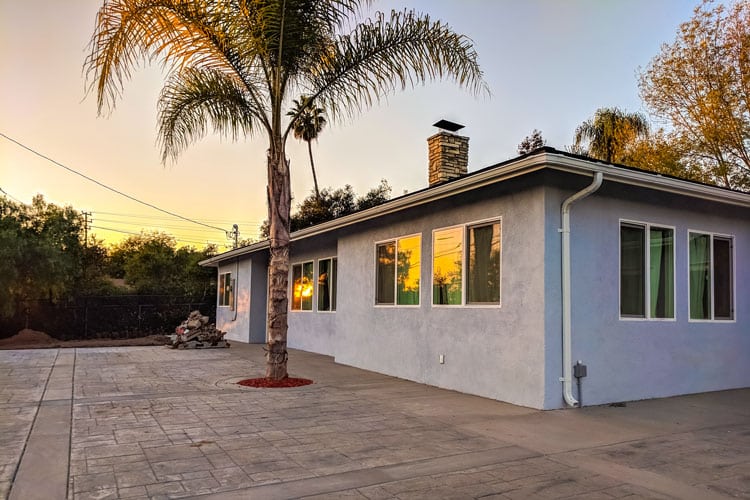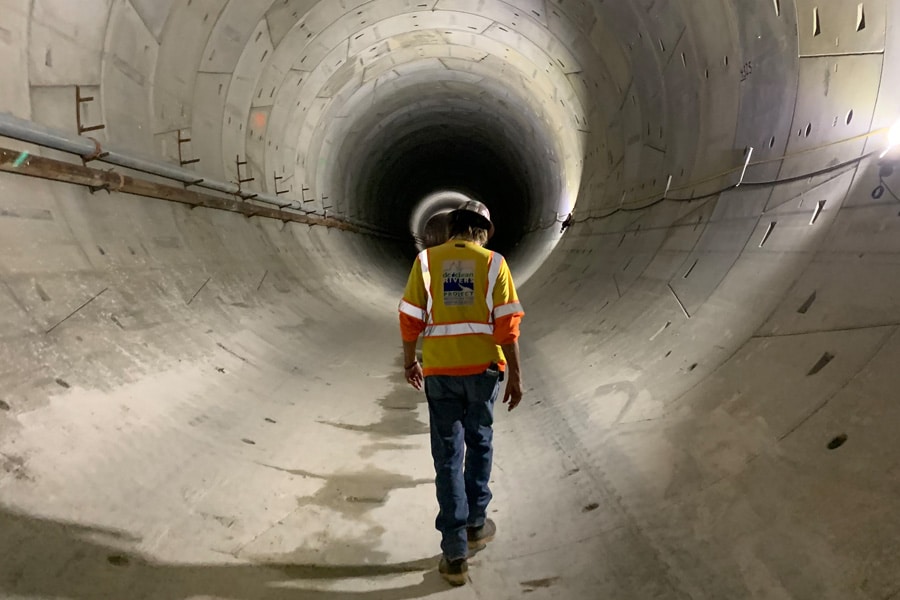About 10 minutes north of downtown Santa Barbara, just off Foothill Road, Marc Belfortti, in his mid-60s, is overseeing the final touches of his latest construction project. It’s a single-story, four-bedroom, two-bathroom house. It’s been completely renovated—walls knocked down, the floorplan reimagined to make it as open as possible. From the outside it doesn’t look much different than any of the other buildings, but as soon as you open the door, it’s apparent that the house is unique.
Belfortti is the executive director at Tri-Counties Community Housing Corporation. The nonprofit’s mission is to provide housing for people in Southern California with developmental disabilities. It’s a small operation, and they’re faced with innumerable unique challenges when it comes to building these types of facilities. To help the nonprofit meet their goal of building the best housing possible, Bluebeam recently donated three seats of Bluebeam Revu, the project efficiency and collaboration solution. We caught up with Belfortti to ask about the unique construction challenges his company faces, and to find out how Bluebeam was helping.
StrXur: What kind of work does Tri-Counties do?
Belfortti: We do housing for folks with developmental disabilities—autism, cerebral palsy, intellectual challenges, Down Syndrome. The state of California has a very nice safety net for folks with developmental disabilities—they’re eligible for services from cradle to grave. Once they turn 22, usually, the responsibility of care transfers from the school district over to our founding partner, Tri-Counties Regional Center.
Tri-Counties Community Housing Corporation was founded in 2008, to address the affordable housing needs for the people we serve.
StrXur: What kind of challenges come with building housing for people with developmental disabilities?
Belfortti: At around this age it becomes very problematic for many of the men with autism to live at home, people with cerebral palsy need complete wheelchair accessibility, things like that. We have very specialized homes that serve and enhance services and support. They provide 24/7 care. It’s more hands-on.
The home we’re sitting in now was acquired and renovated specifically for the needs of autistic individuals that have a high propensity for self-injurious behaviors—meaning they hurt themselves. Or they damage a lot of property. In many instances, they require one-to-one care.
StrXur: What kind of unique features does this house have?
Belfortti: We create properties that create a direct line of sight. That way if an individual is fine, doesn’t need care, the staff doesn’t have to sit right next to them—they can monitor them from across the house and still be ready to step in during moments of crisis.
We make big bathrooms. Although these guys and gals can walk, if they have a behavioral event while in the bathroom, staff can come in and assist safely.
We try to put welded door frames in, that way you can slam it and it’ll be fine. That’s a common occurrence with our population.
You might notice these specialized wall systems. This one bedroom, more than any of the other rooms, is protected for sound. Foothill Road is right out there, but you can’t hear anything. So this room lets somebody have a crisis—and even if they really like or need to yell, it won’t affect the other residents. The walls are covered in this acoustic paneling reinforced with padding on the corners. You can hit your head on that. It’s going to hurt. You could even give yourself a concussion, but it won’t cut you. You’re not going to be bloody.
We put in tamper-proof screws, and the outlets are all hospital quality, meaning they can take a beating.
The flooring is hospital grade. We heat-weld it and put in rubber baseboards. One of the major threats we face is flooding where we’d have to relocate these guys. That’s going to be a big, big issue. Hopefully this flooring would mitigate a lot of the damage so we wouldn’t have to move people.
Many of these things have never given us an issue before, but we’re trying to stay two or three steps ahead.
StrXur: How has Bluebeam helped you in all this?
Belfortti: The software is great. In the past, we used a generic architectural software. Now that the county of Santa Barbara is really pushing for the electronic submission of plans, Bluebeam became a necessity for us.
And it worked perfectly for that—Revu enabled us to communicate to the county, but then we started taking advantage of everything else. We have a big group of stakeholders on our projects. We use structural engineers, we have the regional center, we have the state, we have the caregivers, we have the parents, we have the contractors. So our ultimate plan is to use Bluebeam Studio so everybody can participate and they can all look at the drawings and changes and provide feedback. Everybody stays up to date.
There are so many ways that’s helpful. For instance, in hindsight, the big wall we had to knock down in this house probably ended up costing us $40,000. If everybody involved could’ve seen the reason for the cost and the delay and the headache, we wouldn’t have to make and document 15 calls to update all the stakeholders. In the future, with Studio, we could bring all the stakeholders in virtually and say, “This is what we have to do here, this is why, everybody please give your stamp of approval…and forever hold your peace.”














